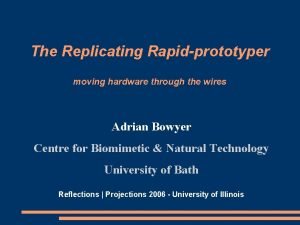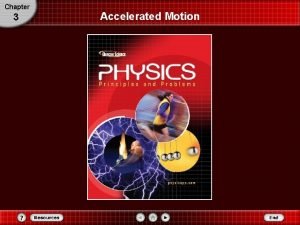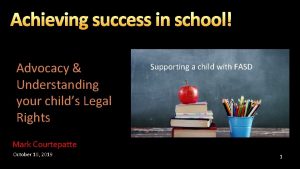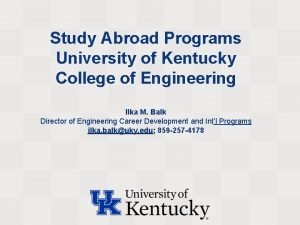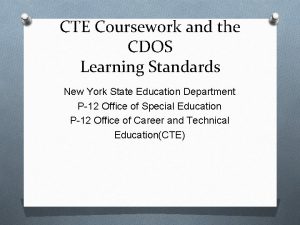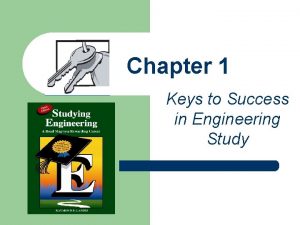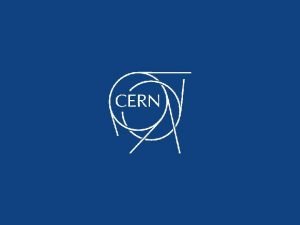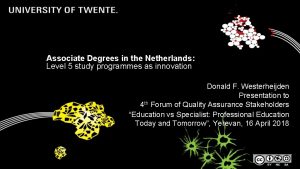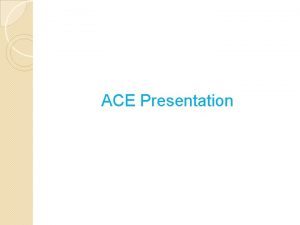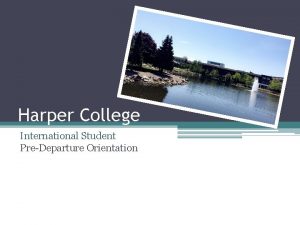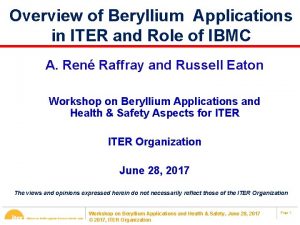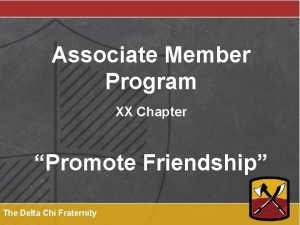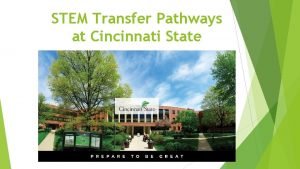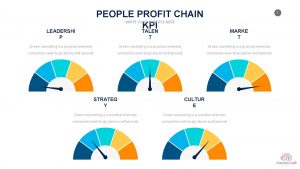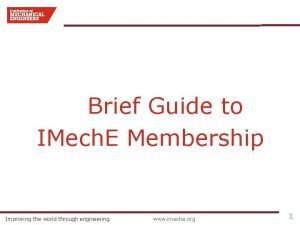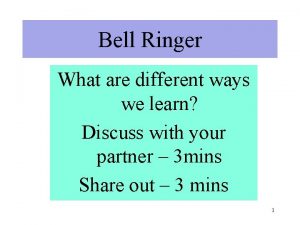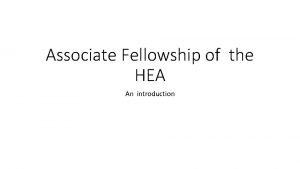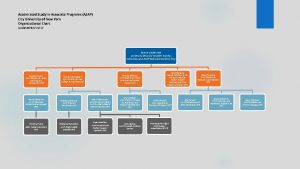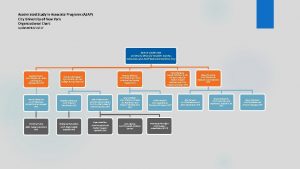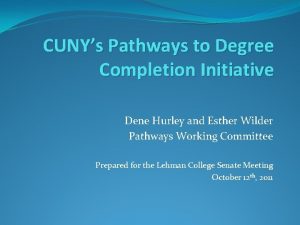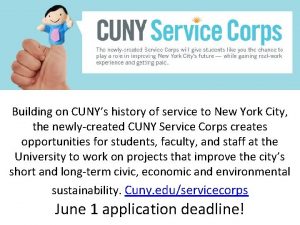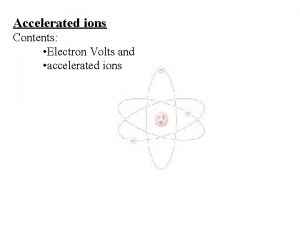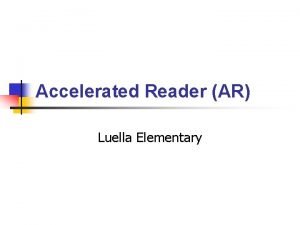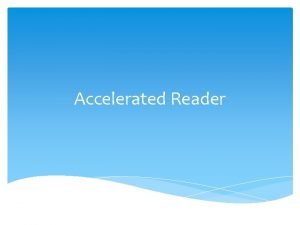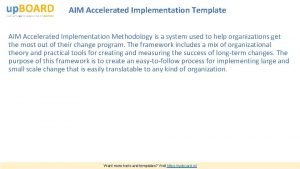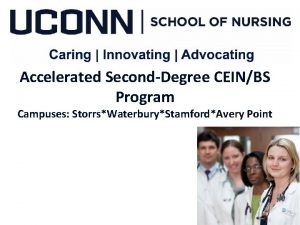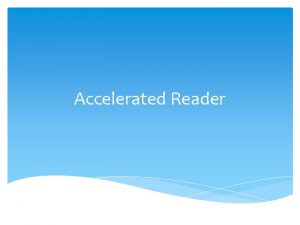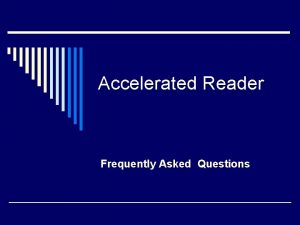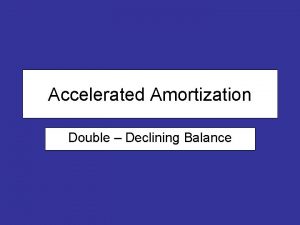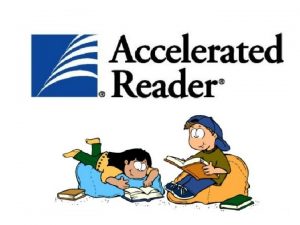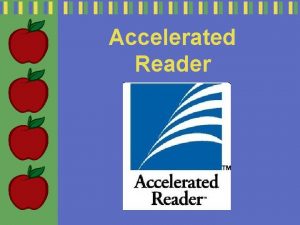Replicating Success CUNYs Accelerated Study In Associate Programs










































- Slides: 42

Replicating Success: CUNY’s Accelerated Study In Associate Programs (ASAP) @aypf_tweets

Webinar Technical Support • Go. To. Webinar Technical Assistance: 1 -800 -263 -6317 • To submit live questions, please use the “Questions” box on the control panel • A recording of the webinar and other resources will be available at www. aypf. org

Presenters Donna Linderman, University Dean for Student Success Initiatives, Office of Academic Affairs, City University of New York Susan Scrivener, Senior Associate, MDRC Brett Visger, Associate Vice Chancellor, Institutional Collaboration & Completion, Ohio Board of Regents

Comprehensive Supports to Improve Graduation Rates: CUNY Accelerated Study in Associate Programs (ASAP) Donna Linderman University Dean for Student Success Initiatives and ASAP Executive Director CUNY Office of Academic Affairs American Youth Policy Forum Webinar March 19, 2015

ASAP THEORY OF ACTION § Remove financial barriers to full-time study § Provide structured degree pathways and comprehensive, well-coordinated support services § Establish clear expectations for all students § Build community through early engagement and a cohort model More fully engaged students who graduate in a timely manner Goal: At least 50% of students earn an associate degree within three years

ASAP INCEPTION 2007: § CUNY funded by Mayor’s Center for Economic Opportunity (CEO) for three -year pilot § ASAP launched with 1, 132 fully skills proficient students* across six CUNY community colleges in the fall * 28% of fall 2007 ASAP students had some developmental needs when recruited that were addressed over summer.

ASAP Total Enrollment by Semester Fall 2007 to Fall 2014 4 500 4 238 4 000 3 500 3 205 3 000 Fall 2012: First expansion begins 2 500 2 204 2 000 1 500 1 000 500 Fall 2011: Funding ‘baselined’ by CEO 1 132 1 250 909 1 286 795 Fall 2009: Began to admit dev edu students 0 Fall 2007 Fall 2008 Fall 2009 Fall 2010 Fall 2011 Fall 2012 Fall 2013 Fall 2014

Average Graduation Rates of ASAP and CUNY-Constructed Comparison Group Students: 51, 9% Fall 2007 -Fall 2012 Cohorts 60% 50% ASAP Comparison Group 40% 26, 1% 22, 2% 30% 20% 9, 0% 10% 0% All 2 -Year Graduates (ASAP N=4, 547; Comp N=19, 087) 3 -Year Graduates (ASAP N=2, 985; Comp N=15, 042) Source: CUNY Office of Institutional Research and Assessment, CUNY ASAP participating colleges, and National Student Clearinghouse.

ASAP SELECTION CRITERIA § Must be City resident and/or eligible for in-state tuition § Agree to study full-time in an ASAPapproved major § Most majors other than nursing and allied health are offered § Continuing/transfer students: less than 15 credits and in good academic standing § Be fully skills proficient or have no more than two developmental course needs at application § Receive some need-based financial aid (Pell and/or TAP)

Summary Profile of Combined ASAP and CUNY Community College Students Total Enrollment Gender Female Ethnicity American Indian/Native Alaskan Asian/Pacific Islander Black Hispanic White Age Admission Type First-time Freshmen Developmental Students At Time of Application to ASAP/CUNY GED Recipients Pell Receipt Combined ASAP Students (Fall 2007 -Fall 2014) CUNY Community Colleges (Fall 2013) N 8, 670 97, 751 % 58. 1 56. 9 % % % mean 0. 4 11. 5 32. 0 42. 6 13. 6 21 0. 3 15. 9 28. 1 39. 0 16. 6 23 % % % 66. 6 71. 5 80. 1 11. 6 74. 3 81. 1 6. 6 56. 9 Source: CUNY Office of Institutional Research and Assessment (OIRA).

ASAP PROGRAM ORGANIZATION Bronx ASAP QCC NYCCT ASAP (F’ 15) Medgar Evers ASAP Colleges: § Recruitment § Direct services to students § Local staffing Monitoring student progress/engagement § Program integration at college level BMCC ASAP CUNY Academic Affairs La. Guardia ASAP CSI ASAP (F’ 15) Hostos ASAP Kingsborough ASAP CUNY OAA: § Overall program administration § Program-wide resource needs § Evaluation/data management § External partnerships § Citywide outreach

ASAP CORE ELEMENTS § Financial Resources § Tuition waivers (for financial aid eligible students) § Free use of textbooks § Monthly Metrocards § Structured Pathways § Consolidated full-time course schedules (ie: am, afternoon, evening, weekend) § Immediate/continuous developmental course taking § Winter and summer courses to build academic momentum

ASAP CORE ELEMENTS § Comprehensive and Coordinated Supports § High-touch advisement § Embedded career development services § Tutoring resources (mandated for some students) § Referrals to campus resources (Single Stop, counseling, etc. ) § Early Engagement and Connected Community § Summer developmental course taking and advisor contact § ASAP Summer Institute § First-year blocked courses

ASAP EVALUATION INTERNAL EVALUATION § Ongoing quasi-experimental analysis (using official CUNY data) § Web-based data management system § Annual student surveys and focus groups § Data reviewed regularly to assess impact, measure movement towards goals, and improve program practice EXTERNAL EVALUATION § Cost-benefit study by the Center for Benefit Cost Studies in Education (CBCSE), Teachers College, Columbia University led Dr. Henry Levin § Five-year random assignment study by MDRC

ASAP GROWTH & REPLICATION § Expand to 13, 000 students by 2017 supported by the Mayor’s Office ($35 m): § Focus on serving more STEM majors § Addition of College of Staten Island New York City College of Technology in fall 2015 § ASAP pilot at John Jay College in fall 2015 (with support from Robin Hood Foundation) § Replication demonstration project in Ohio with MDRC, Ohio Board of Regents, Great Lakes Higher Education Corporation, and three colleges

Donna Linderman University Dean for Student Success Initiatives and ASAP Executive Director Donna. linderman@mail. cuny. edu www. cuny. edu/asap

Audience Q&A • To submit questions, please use the “Questions” box on the control panel

Evaluation of CUNY ASAP Sue Scrivener, Senior Associate AYPF Webinar March 19, 2015

Why Look at ASAP? § CUNY’s ASAP is comprehensive and long-lasting • Brings together many promising reforms • Provides services for three years § One of the most ambitious efforts in the country to boost graduation rates for community college students

The Evaluation § MDRC studied the implementation and cost of ASAP, and its impacts on students’ academic outcomes over three years § Study took place at three of CUNY’s community colleges: Borough of Manhattan, Kingsborough, and La. Guardia

Random Assignment Research Design Target Consent & Data Random Assignment • Targeted students invited to participate in study • Participants give consent • Baseline data collected • Program group – Students can enroll in ASAP • Control group – Students can receive standard college services

Evaluation Target Group § Family income at or below 200% of federal poverty level or Pell-eligible § Needed one or two developmental courses § ASAP also serves college-ready students but they were not included in the MDRC study § Incoming freshman or continuing student with 12 or fewer credits and 2. 0+ GPA § Willing to attend school full time

Characteristics of Students at Start of the Evaluation § 900 students randomly assigned in 2010 § 62% women § Average 21. 5 § Racially diverse § 6% married, 15% had a child § 31% employed

ASAP Provided Much More Intensive Student Supports Program group students Control group students Advisor 38 6 Career services 9 2 Tutoring 24 7 Average reported meetings in first year with:

ASAP Affected Course Enrollment § Most program group students took an ASAP seminar for three semesters – a course with exclusively ASAP students that covered topics such as goal-setting, study skills, and academic planning § Most program group students took at least one additional course with a concentration of ASAP students

ASAP’s Financial Benefits Were Well Implemented § Most students received monthly Metro. Cards, and text books § ASAP provided a tuition waiver to students who needed it § 3 – 11 percent of program group, depending on semester

ASAP Increased Enrollment § In most semesters, a higher proportion of program group members than control group members enrolled in college § Increases were particularly large during winter and summer “intersessions”

ASAP Increased Credit Accumulation § ASAP consistently increased the number of credits students earned § By the end of three years, program group students earned an average of about 9 credits more than control group students

ASAP Almost Doubled Graduation Rates § 40. 1 percent of program group earned a degree after three years, compared with 21. 8 percent of control group § Biggest increase in graduation – by far – MDRC has found § Program group also more likely to be enrolled in fouryear school at end of study

ASAP Cost-Effective at Three-Year Point § Cost per graduate was lower in ASAP, despite the substantial investment required for the program, because ASAP led so many more students to graduate than usual college services

What Have We Learned? § Comprehensive, long-term program can substantially boost students’ success § Pairing a full-time requirement with a wide array of supports was central to improving and accelerating students’ progress

What Have We Learned? § Monitoring students’ program participation and providing a meaningful benefit to those who participate can substantially increase engagement § Developmental education students’ outcomes can be markedly improved without changing what happens in the classroom

Key Remaining Research Questions § What are CUNY ASAP’s longer-term effects on graduation? § MDRC hopes to raise money to continue tracking study students § Can other colleges operate ASAP-like programs and achieve substantial effects for students? § MDRC and CUNY working with Ohio Board of Regents to replicate ASAP at three colleges § MDRC exploring other options to replicate or adapt ASAP

For Additional Information See www. mdrc. org for reports from the ASAP evaluation Questions? Email sue. scrivener@mdrc. org.

Audience Q&A • To submit questions, please use the “Questions” box on the control panel

Replication Efforts in Ohio Brett Visger Associate Vice Chancellor, Institutional Collaboration & Completion Ohio Board of Regents

What is Ohio’s Interest in ASAP? • • • Outcomes-based funding Completion agenda Assist institutions Inform policy context Collaborate on research

Participating Ohio Colleges • Cincinnati State & Technical College – C-State Accelerate • Cuyahoga Community College (Tri-C) – D 3 (Degree in 3) • Lorain County Community College – SAIL (Students Accelerating in Learning)

Opportunities in Ohio • Maintain fidelity to ASAP model within Ohio context. • Identify possible policy levers and/or barriers. – OCOG eligibility example • What does scale look like?

Audience Q&A • To submit questions, please use the “Questions” box on the control panel

Questions for Today’s Presenters Donna Linderman, University Dean for Student Success Initiatives, Office of Academic Affairs, City University of New York Susan Scrivener, Senior Associate, MDRC Brett Visger, Associate Vice Chancellor, Institutional Collaboration & Completion, Ohio Board of Regents

Thank You Please fill out the survey upon exiting the webinar. Your feedback is important to us! To learn more and access copies of the slides and event recording, please visit www. aypf. org
 Adobe spark certification
Adobe spark certification Replicating rapid prototyper
Replicating rapid prototyper Black scholes equation
Black scholes equation Collection of programs written to service other programs.
Collection of programs written to service other programs. Accelerated motion chapter 3 answers
Accelerated motion chapter 3 answers Your child's success or lack of success
Your child's success or lack of success Your child's success or lack of success
Your child's success or lack of success Uwm study abroad programs
Uwm study abroad programs Harvard study abroad
Harvard study abroad Usf travel abroad
Usf travel abroad University of kentucky study abroad programs
University of kentucky study abroad programs Cte programs of study
Cte programs of study Nys cte standards
Nys cte standards Three keys to success in engineering study
Three keys to success in engineering study Bcs student membership
Bcs student membership Promotion from associate professor to professor
Promotion from associate professor to professor Tecniche associate al pensiero computazionale
Tecniche associate al pensiero computazionale The pyramid at chichen itza is most closely associate with
The pyramid at chichen itza is most closely associate with Lone star college nursing program prerequisites
Lone star college nursing program prerequisites Sep certification
Sep certification Disadvantages of direct mapped cache
Disadvantages of direct mapped cache Pjas cern
Pjas cern Associate degrees in the netherlands
Associate degrees in the netherlands Laser alignment
Laser alignment Physician associate lecturer
Physician associate lecturer Rcog associate
Rcog associate Kosten tio hbo
Kosten tio hbo Analyst hierarchy
Analyst hierarchy Harper college associate degrees
Harper college associate degrees Iter project associate
Iter project associate Critical aad
Critical aad Lahc associate's degree
Lahc associate's degree Critical thinking is an active process of discovery
Critical thinking is an active process of discovery برنامهxx
برنامهxx Associate degree rmit
Associate degree rmit Cincinnati state associate degrees
Cincinnati state associate degrees Safety associate
Safety associate Associate warden
Associate warden Sales profit chain
Sales profit chain Imeche associate membership
Imeche associate membership To associate
To associate Hea associate fellowship
Hea associate fellowship Associate consultant in capgemini
Associate consultant in capgemini

